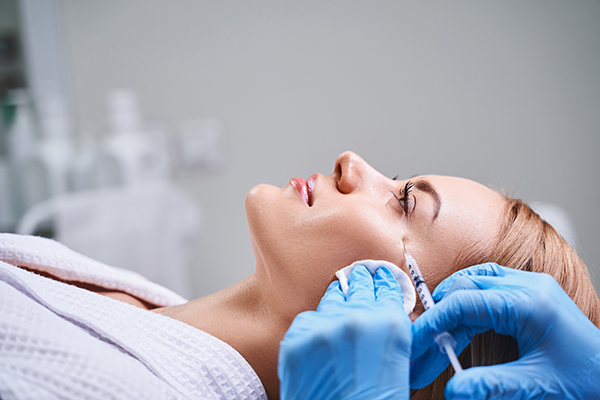
Botox mainly known as botulinum toxin is a compound known to improve the appearance by relaxing the muscles that cause the wrinkles. These injections are also used to treat medical conditions like migraines, hyperhidrosis, overactive bladder and eye problems. To maintain the results the treatments should be repeated every three to six months. To know more about Botox, this is a brand called botulinum toxin that are neurotoxins that affect the nerves and cause muscle weakening. One might get botulinum toxin injections for cosmetic and medical reasons. The doctor or any healthcare providers inject a small quantity of Botox into a specific muscle to smoothen the wrinkles to prevent migraine and other major health conditions.
How does Botox work?
Botox works by blocking nerve cells to muscles, as a result, the injected muscle can’t contract or tense up these effects are always temporary and can last several months. The muscle injected depends on the primary area of concern and several areas can be treated in one session. Generally, Botox cosmetic injections are used to address signs of ageing like smooth and fine lines, and wrinkles in severed areas of the face including the forehead, eyebrows, nose, lips, chin, Eyes, Jawline and neck. It is used to treat many deformities, like Excessive sweating, crossed eyes, excessive muscle contractions, eyelid twitching, chronic migraines, overactive bladder, pediatric upper limb spasticity, adult spasticity, blepharospasm, and cervical dystonia. Generally, Botox can be even used to reduce pain like back pain, neck pain, jaw pain, nerve pain, sciatica pain, neuropathy and many more.
What is Botox made of?
It is a bacterium known as Clostridium botulinum. The doctors use a specific type of bacteria(Type A) for medical injections. The botulinum toxins occur naturally in soil and contaminated foods, if consumed in large amounts of botulinum toxins or bacteria to get into a wound one can develop botulism. This serious nerve damage disorder affects breathing. For optimal safety, and efficacy the Botox is produced in the lab and the technicians dilute and sterilize the botulinum toxins so they would not cause the botulism. Botox is generally safe when administered by a licensed healthcare provider. Making sure the supplements are being taken is also a key point to note. Certain medications will increase the risk of bruising at the injection sites. These include anticoagulants or the blood thinners like warfarin and nonsteroidal anti-inflammatory agents. Alcohol will also make one more prone to redness and bruising.
What one should expect during Botox treatment
The healthcare provider will use a fine needle to inject small amounts of Botox into the treatment area and depending upon the issue one might receive several injections in different spots Botox is an outpatient procedure and one might be able to go home the same day the discomfort level is usually mild and the injection might sting and one might feel uncomfortable for a very little period and the procedure would be over quickly. The healthcare provider might apply numbing cream or a topical agent before giving the anaesthesia and if one is receiving Botox for an overactive bladder one might receive local or regional anesthesia. The aftercare of Botox is usually normal one can return to work or do most of the activities immediately after the treatment to reduce the bruises or swelling one can go with one can go with OTC medication or one should not rub or put pressure on the treatment area for 12 hours, stay upright don’t lie down for three to four hours and avoid physical exertion for 24 hours. The treatment can be taken once every three months depending on the impending issue.

